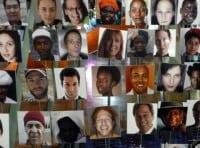
Here’s a conundrum: How can you employ virtually everyone in the world – and no-one at the same time?
The answer lies in the definition of ’employment’. For the new trend in business is to ’employ’ almost no-one, but to co-create new products and services through an intricate web of partnerships made possible by the Internet and the social networks.
Management thinker and business strategist CK Prahalad was quick off the mark to brand the trend as ‘co-creation’ in his 2008 book ‘The New Age of Innovation.’
But companies like Proctor & Gamble were walking the talk long before the consultants caught on.
The concept is simple but profound. In this immensely complex world, no one company can successfully ‘own’ all the resources (human and physical) needed for new product development, particularly in a market that demands novelty and uniqueness. So why not ‘co-create’ your new products in electronic collaboration with your customers, suppliers, and an entire range of outside consultants, experts, thinkers and doers?
With a whole world of workers – none of whom are on your payroll – at your disposal, the possibilities for innovative new products and business models must surely be limitless. The challenge, of course, is to find ways to get all these non-employees to participate in your projects…
ANALYSIS >> SYNTHESIS: How this scenario came to be
Harnessing the wisdom of crowds
Co-creation is the practice of product or service development that is collaboratively executed by developers and stakeholders together. Isaac Newton said that in his great work, he stood on the shoulders of giants. Co-creation could be seen as creating great work by standing together with those for whom the project is intended.
Among those who have helped popularize the term are management writers C K Prahalad and Venkat Ramaswamy, who argue in their book The Future of Competition (2004, Harvard Business School Press) that value is increasingly being co-created by the firm and the customer, rather than being created entirely inside the firm. The introduction of Enterprise social software may function as an enabler of this change in how companies evolve to business networks. And how both large and small companies cooperate.
Co-creation is at the heart of the open source software movement, where users have full access to the source code and are empowered to make their own changes and improvements to it.
Co-creation is becoming more evident in marketing, where companies such as Lego have successfully engaged many of their adult customers in designing new products, or Converse, which persuaded large numbers of its most passionate customers to create their own video advertisements for the product.
– From Wikipedia, the free encyclopedia
Warning: Hazardous thinking at work
Despite appearances to the contrary, Futureworld cannot and does not predict the future. Our Mindbullets scenarios are fictitious and designed purely to explore possible futures, challenge and stimulate strategic thinking. Use these at your own risk. Any reference to actual people, entities or events is entirely allegorical. Copyright Futureworld International Limited. Reproduction or distribution permitted only with recognition of Copyright and the inclusion of this disclaimer.
